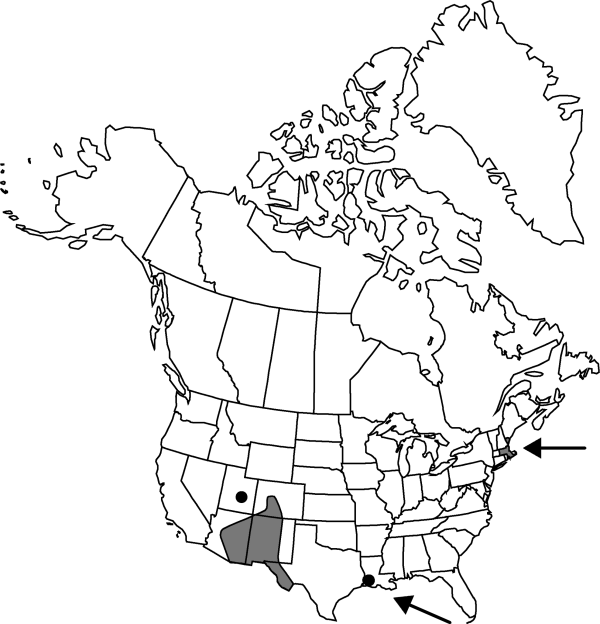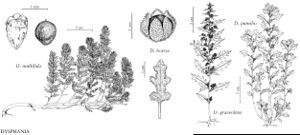Dysphania graveolens
in & Clemants, Ukrayins’k. Bot. Zhurn., n. s. 59: 383. 2002.
Stems erect, 2.3–5.2 dm, sparsely pubescent with short hairs, these rarely with gland heads. Leaves aromatic; petiole to 1.3 mm; blade 1.7–4.5 × 0.7–2.6 cm, base cuneate, margins pinnatifid or entire (in distal leaves), apex acute to acuminate, mucronate, with sessile glands adaxially. Inflorescences terminal compound cymes, 8.5–22 cm; bracts leaflike, lanceolate, 2.1–10.3 × 0.1–0.6 mm, generally absent in fruit. Flowers: perianth segments 5, distinct nearly to base, distinct portion ovate, with large single tubercle abaxially near apex, 0.5–0.7 × 0.35–0.6 mm, apex acuminate, with sessile golden glands, covering seed at maturity; stamens 1(–2); stigmas 2. Achenes subglobose; pericarp adherent, membranaceous, papillose, becoming rugose, usually white-blotchy. Seeds subglobose, 0.6–0.9 × 0.5–0.7 mm, margins rimmed; seed coat rugose.
Phenology: Fruiting late summer–fall.
Habitat: In shade of pines and junipers or occasionally in open dry plains, ridge tops, or in waste areas in the east
Elevation: 900-2800 m
Distribution

Ariz., Colo., La., Maine, Mass., N.Mex., N.Y., Tex., Utah, Mexico, Central America (Guatemala).
Discussion
Western populations of Dysphania graveolens are native while those populations in the eastern part of the continent are considered introduced.
Selected References
None.
